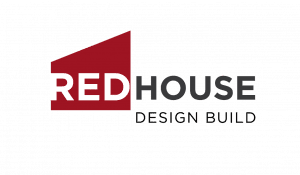Posted by: Justin Zeller, CR, Found and General Manager of Red House Build Design, and President and Chair of EM NARI PR Committee
These are certainly unusual times. I’ve had a number of recent conversations with various organizational leaders. The news is mixed and nuanced. Many people, especially in the remodeling industry, are experiencing an incredibly high level of demand, which sounds good and points toward traditional measures of success. However, the confluence of social unrest, the upcoming election, economic uncertainty, and physical and mental health issues connected to the pandemic have created a state of continual stress. The stress of home life and work-life have blended together and the professional lives of many have been negatively impacted. Individuals are combing through a combination of personal and professional changes that are ambiguous and amorphous. Some of these uncertainties can’t be helped by the organizational leaders. In the end, this is part and parcel of our communal experience of the pandemic.
Organizations are beginning to buckle under the pressure. And across-the-board, all these different organizational leaders that I’ve spoken with, from educational leaders to Design/Build companies, from restoration companies to restaurants: teams are exhibiting symptoms of this burden primarily through unanticipated, and often unwanted, company turnover. Teammates are leaving.
I had lunch with a colleague who owns a business here in Providence. He served in the Navy and the reserves, and he likened this to taking a naval facility to heightened levels of security. The thing about this, he said, is that there is a shelf-life to our ability to deal with a crisis situation, what Ann Masten, Ph.D. calls “surge capacity”. It is impossible to maintain the highest level of security for more than a limited amount of time. It’s not feasible to successfully sustain the vigilance, attention to detail, and the heightened level of stress for more than a short burst of time. After that, people begin to get weary and exhausted from the exertion — physical, emotional, and mental — required to preserve a level of vigilance beyond what they’ve known as “normal”.
During a recent one of these conversations on organizational health, a friend in education pushed me toward Brené Brown’s recent podcast on Comparative Suffering, the 50/50 myth, and Settling the Ball, where she equates “normal life” as the Holy Grail of human experience. Imagine that? This was an eye-opener for me, that what many of us need is a path back — even for a short respite — to what we used to feel was “normal”. A few minutes of normal from February 2020 might be the medicine we all need. She relates how in normal times, in a normal crisis, we elevate our adrenaline for a short amount of time to deal with the crisis. Then, as soon as the crisis is over, that physiological reaction can return to normal, right? She says how something terrible happens, then people leave after the funeral, or the waters recess to pre-flood levels fairly quickly. The adrenaline levels can recede along with the floodwaters, and we can mentally shift to the restorative nature of rebuilding. In those situations, you don’t continue to deal with “crisis” over a prolonged, indefinite period of time.
Yet with COVID, we are dealing with a continual crisis. We are still navigating the rising waters of a flood. In Rhode Island, we’ve just received our newest protocols from the state that help us to understand the “new” best practices to keep our team and our clients safe. These tell us what our lead carpenters need to do on-site to protect our clients and ourselves. We get updates on best practices that reflect the updates on the transmission rate.
Unfortunately, these pressures are fracturing our team. We are experiencing high turnover in our design department, and some turnover in the field. It seemed rather sudden, but it corresponded with our partial return to the office after being away and remote for so many months. One person after another emerged with different motives that led them to choose a new opportunity. Some of those opportunities were new positions at different companies, some were choices to spend more time with loved ones, young and old.
For me, as an owner, as a leader, as a team builder, it heartens me to see people progressing to find their path and embrace what is most important to them; and emotionally, it also weakens my sense of accomplishment in the team that we’ve been curating for years. And, as an empathetic person, I realize that everybody on my team is dealing with the same sense of overstress, of emotional fatigue, of worry about team members, and of worry about family members that I am dealing with.
Tools you might use to avert team fracturing
I think we’d all like to avoid having our team fall apart. When I take those few steps back from being in the business and focus on our organizational needs, I realize the way that I feel right now is not unique. Everyone on my team is feeling the same way. And yes, I’m going to have turnover. Almost every business owner I’ve spoken with is looking for replacements for folks who’ve left. This is a transitional time in our industry, our nation, and the world.
We at NARI, as organizational leaders, project managers, designers, or carpenters, we who are engaged in reading this newsletter, we can all remember to lean on each other, inter-organizational, or within our own internal team. Sometimes this means taking a measure of who needs what and when. It means being open about your needs and asking others to be open about their needs. You might find that meeting each other halfway doesn’t always work. Brené calls this the 50/50 myth; at times you have a gap when the 50/50 doesn’t add up to 100. This means someone has to give beyond their means, or you have to look for a solution to bring your team collectively up to 100%. Sometimes this may mean taking a step down from personal needs, allowing you to be available to give space or room to someone else on your team. Sometimes the opposite is needed, but you’ll have to ask for it. We all have to back up this support system with clear and honest communication. That means showing vulnerability, and it may not always feel comfortable. However, being an open, emotionally interdependent leader is incredibly important at this particular time. This type of free and honest communication might even help to build incredible tools as we move forward in the world.
As leaders and members of organizations, what are the tools we can use to reconnect our team? I had a lead carpenter meeting and training this past Friday afternoon. We’ve been doing this every other week. Sitting together, socially distanced with the doors open. On Friday, we started the agenda for the training, and at a certain point, I realized this was a better opportunity to get together and talk about what’s working and not working, rather than me needing to follow a preconceived agenda. The ability for those carpenters to talk with each other, learn from each other, and decompress with each other far eclipsed my need to get through a preset agenda.
Brené Brown, in her podcast, talked about something she called a family plan. That is within a family how do you make sure that everybody is getting what they need to survive and thrive. This may mean a combination of exercise to get out anxiety and stress, it may mean listening, it may be good food. Sometimes it means one person in the family needs more attention than usual, and at other times, another person needs the extra boost.
Our teams need a plan, a company plan. Can we set up a framework in which the members of our team are able to communicate about the things that they need in order to get their personal and professional needs met? To feel engaged in our team’s mission and goals, they need to continue to feel like a productive, purposeful part of the organization. How can we help them to stay engaged in the mission of each individual organization? It might be worth sitting down with your own leadership team and talk openly and honestly about what everyone needs right now.
Mitigation and acceptance
Tools can help keep our teams engaged, and this can lessen the effect of worldwide shifting of behaviors, but no matter what tools we use to mitigate the experience of our team, the truth is this pandemic is not a quick and easy crisis to get over. We are in for a long and extended recovery. To add to the stress, many in our industry of remodeling, building, and design are finding that our markets are bustling at the moment. On the one hand, that is a wonderful thing. On the other hand, if our teams are too stressed and are thinking of switching careers, or jobs, this is going to leave us all in a tight and tough position.
So what is there to do? Mitigate as well as you can. Use team-building exercises (try this online escape room with your team!), outdoor team meetings, zoom happy hours (if you can stand another zoom meeting), or eating at an open restaurant outside in small groups. The other side of this coin is to accept that this will continue to be hard.
I rode to school with two of our boys this morning, and it was pretty cold — just over 40F. My ten-year-old gave me the silent treatment most of the ride for not driving them… Yet, when we got to school, one of the teachers pulled up on his bike just after we did, and, audibly impressed, he asked Cole, “wow, how far did you come this morning?” Although I know Cole didn’t start the morning wanting to ride, I could also see his chest swell with a bit of pride as he saw his teacher’s eyes so wide and overawed. For us, the same as for Cole, this is going to continue to be uncomfortable for us all. Even with the best communication and team awareness, people are going to change the direction of their life stories, choosing a different adventure. For us left leading our team, we will need to adjust to the changes in our own narratives, stay strong, and re-invent the vision of our future while being flexible and adaptive.
Finally, as a long-time member of NARI, I have to say that our last meeting as a group was incredibly refreshing. What I needed, and continue to need, sometimes I can’t get from my team. I need to be able to talk with other people in the industry and hear how they’re doing, talk about how I’m doing, talk about the difficulties and the stress. In the breakout rooms at the beginning of our last NARI membership meeting, I felt that connection, and that sense of relief that comes with being able to uncover and bare the difficulties that I’m witnessing, and living. Thank you to everyone who attended.

